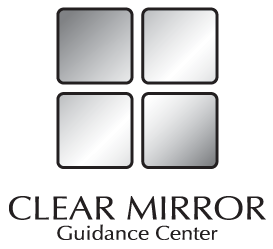Talk therapy with a strength-based, trauma-informed approach
Traditionally, psychotherapy has emphasized the importance of a relationship between the client and the treating clinician and what dynamic arises out of it which can be examined and used to move the client forward. In other words, this approach values healing of the mind/heart and body connection that is in the context of relationships with insight that is coupled with action being one of the most important aspects of gains from therapy.
- Attachment-focused and Trauma-informed therapists will fully engage clients in dialog about their therapeutic relationships to establish a safe space. Coping skills are taught before any challenging issues are processed. In the strength-based approach, each person’s strengths and resources are seen as a foundation from which to cultivate more confidence and skill sets. Many clients are often very competent in what they apply themselves to but are also aware of their self-sabotaging behaviors.
- In the Psycho-dynamic approach with Ego-State Psychology, internal struggles as well as desire are explored and the person will learn about their neglected self, coming to terms with the previously unexpressed parts of themselves.
- Similarly, Cognitive Behavioral Therapy will assist the client to delve deeper into ongoing challenges that are preventing the person from doing what she/he would like to do. What is called automatic negative thoughts, preconditioned reactions and “schema” are explored to learn to mitigate from playing out the old maladapted scenarios that are no longer applicable to the current situations. The relationship between thoughts, feelings and actions will be reviewed and a more adaptive response to difficult situations may be identified as well as good coping skills.
- Positive Psychology will reinforce positive thinking and will provide opportunities to appreciate life more fully.
- A Solution-focused approach is typically shorter term and its focus is on present and future rather than to resolve past events/relationship issues. Homework is given to ensure the sustained effort and ongoing support to clients outside the session.
- Eclectic and Integrative: Being well-versed and eclectic in various orientations of psychotherapy affords therapists to accommodate better to client’s needs, be transparent and collaborative with their interventions to re-assess how the treatment is going, and allow for greater freedom to make modifications to treatment planning as indicated.
Art therapy
One of the expressive arts therapy approaches that is so powerful in offering insights and self-reflections, this approach does not require any previous art making experience nor what you may think of as any special talent. The art therapist will generally look to you to find what media you may gravitate toward and may make suggestions as the sessions progress. There are directive and non-directive approaches to art therapy and well-trained art therapists will make that determination of what is suitable for that moment with presenting issues. Art therapy is different from art class in that there is no particular emphasis to the final product and there are no art instructions only explorations of the process and how one may approach self-expressions and problem solving in typical and atypical ways. The use of metaphor, symbolical ways in making intentions, behavioral modifications, as well as having an opportunity to extend the commitment of a new way of being with future templates/rehearsals are all part of this internal process made explicit through art. In some cases, therapists or other significant people may be invited to co-create art expressions with clients; in most cases the self-expressions through art therapy process is considered sacred and private and the art therapist is not just a facilitator but a witness to this important process. A variety of medium including oil pastel, soft pastel, crayons, water-color, acrylic painting, sculpture, assemblage and collage making experiences are offered to support the client’s growth and healing. In the USA, provisional art therapist (ATR-P), registered art therapists (ATR), or board certified art therapists (ATR-BC) registered with American Art Therapy Associations have gone through rigorous trainings and maintain a high level of competency in ensuring that the use of the art process is safe and helpful.
At Clear Mirror Guidance Center, the following adjunct services are offered by therapists who have studied these particular modalities and have professional credentials to render these services.
EMDR
Eye Movement Desensitization and Reprocessing is a relatively new approach to the field of psychotherapy developed by Dr. Francine Shapiro in the 1980s. Given its efficacy in working with variety of trauma victims, already it has been recognized as Evidenced-Based Practice by SAMHSA. EMDR is a psychological method for treating experientially based disorders (such as PTSD) and emotional difficulties that are caused by disturbing life experiences, ranging from traumatic events such as combat stress, assaults, and natural disaster, to upsetting childhood events. EMDR is a complex method that brings together elements from well-established clinical theoretical orientations including psychodynamic, cognitive, behavioral and client-centered. (Shapiro, 2001). EMDR entails a carefully phased approach and is guided by the principle of Adoptive Information Processing – that each person has the capacity to heal if the underlying maladaptive belief about the person/situation can be examined and re-processed in a more workable way so that the past events lose a strong hold of the person’s daily life, be it important life decisions or emotional and physiological reactions to things. Administered by a trained and qualified practitioner, EMDR is safe for adults and children of all ages.
Brainspotting
An off shoot of EMDR that pays close attention to the role of eye movements to allow for “dual-attention stimulation that elicits an orienting response” (MacCulloch & Feldman, 1996) that are particular to a certain visual field — Dr. David Grand theorized that these visual spots that bring up certain feelings and thoughts correspond with particular “brain spots” and that these spots can be mapped and accessed for resources and area to explore for more growth and healing. It was observed by Dr. Grand that Brainspotting is an effective and organic alternative to a multiple phase treatment.
